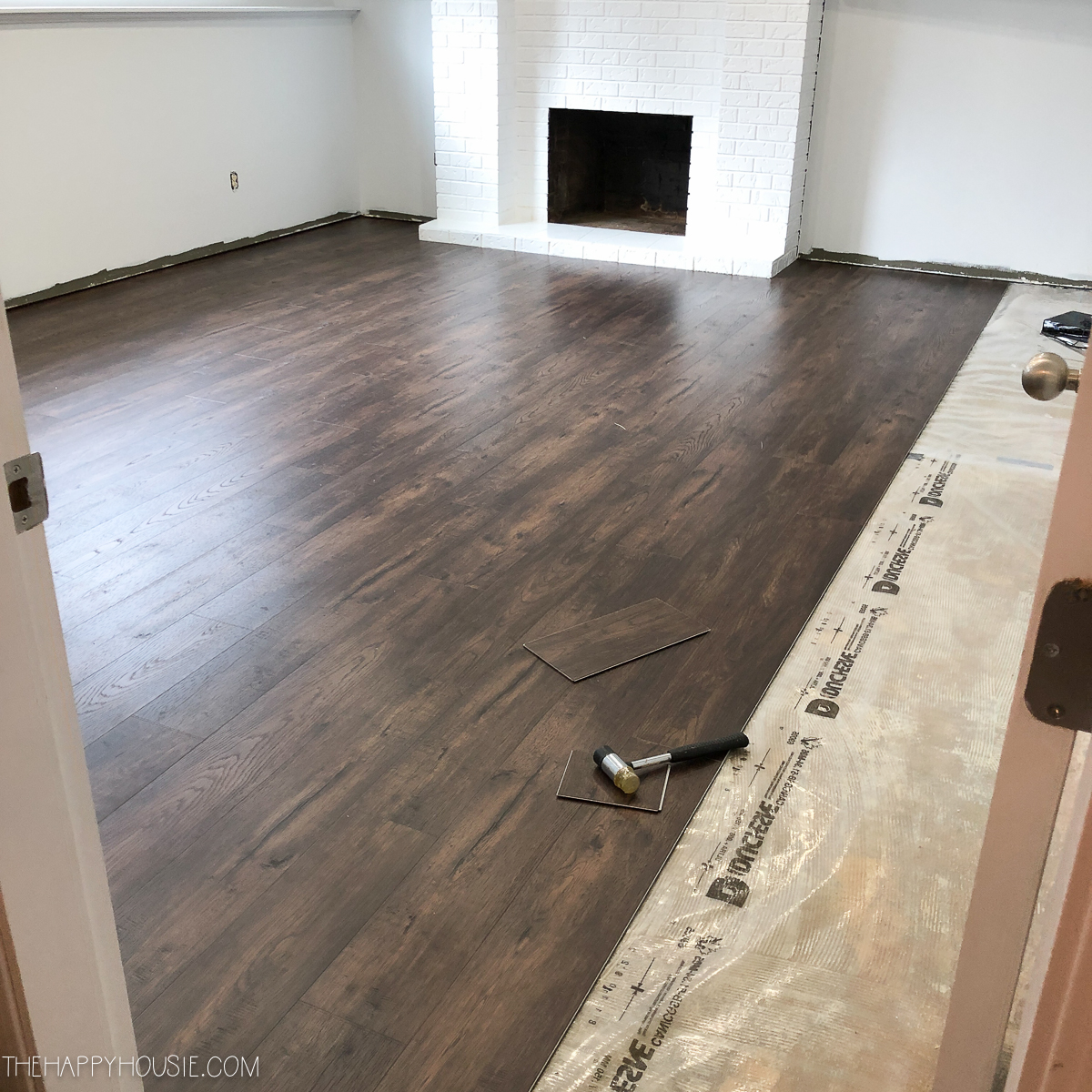Having recently completed a basement renovation project, I wanted to share my experience with vinyl plank flooring installation. Vinyl plank flooring has emerged as a popular choice for basements due to its durability, moisture resistance, and easy installation. In this article, I will provide a concise guide to installing vinyl plank flooring in your basement, along with answers to frequently asked questions, to help you make an informed decision for your own project.
Vinyl Plank Flooring Basement Installation:
Installing vinyl plank flooring in your basement is a straightforward process that requires minimal tools and expertise. Here’s a step-by-step overview of the installation process:
- Prepare the Subfloor: Ensure that the subfloor is clean, dry, and level. Remove any debris or unevenness, and repair any existing cracks or damage. This step is crucial for achieving a smooth and durable vinyl plank flooring installation.
- Acclimate the Flooring: Bring the vinyl plank flooring into the basement at least 48 hours before installation. This allows the planks to adjust to the temperature and humidity of the space, minimizing the risk of expansion or contraction after installation.
- Plan the Layout: Measure the dimensions of the basement and plan the layout of the vinyl planks accordingly. Start from one corner of the room and work your way across, leaving a small expansion gap along the walls to accommodate any movement.
- Install the Underlayment: While not always necessary, using underlayment can provide additional moisture protection and cushioning. Follow the manufacturer’s instructions for installing the underlayment, ensuring that it is securely attached to the subfloor.
- Lay the Vinyl Plank Flooring: Begin installing the vinyl planks by aligning the first row along the starting wall, using spacers to maintain a consistent expansion gap. Connect the planks by interlocking the edges, and applying gentle pressure to secure them in place. Continue laying the planks row by row, cutting them to fit around obstacles as needed.
- Finishing Touches: Once all the vinyl planks are installed, remove the spacers and install baseboards or quarter-round molding to cover the expansion gap along the walls. This gives the flooring a polished and finished appearance.
Can I install vinyl plank flooring directly on concrete in my basement?
Yes, vinyl plank flooring can be installed directly on a concrete subfloor in the basement. However, it’s crucial to ensure the concrete surface is clean, dry, and level before installation. Any imperfections or moisture issues should be addressed before laying the vinyl planks to ensure a smooth and long-lasting result. Additionally, using a moisture barrier or underlayment designed for basement installations can provide added protection against moisture seepage.

Will vinyl plank flooring be affected by basement humidity?
Vinyl plank flooring is highly resistant to moisture, making it a suitable choice for basement installations. However, it’s important to note that extreme and prolonged humidity can still have an impact on any flooring material. To minimize the effects of humidity, it’s recommended to maintain proper ventilation in the basement, use a dehumidifier if necessary, and ensure the vinyl planks are properly acclimated before installation.
Can I install vinyl plank flooring over an existing tile or vinyl floor in the basement?
In most cases, yes, vinyl plank flooring can be installed over an existing tile or vinyl floor in the basement. However, it’s essential to ensure that the existing flooring is in good condition, without any loose tiles or damaged areas. The surface should be clean, smooth, and free from debris. If there are significant irregularities or damaged sections, it may be necessary to remove the existing flooring before installing the vinyl planks.
How durable is vinyl plank flooring in the basement?
Vinyl plank flooring is known for its durability, making it an ideal choice for high-traffic areas such as basements. The planks are designed to resist scratches, stains, and dents, providing long-lasting performance. However, it’s essential to choose a high-quality vinyl plank product with a thick wear layer for enhanced durability. Additionally, using furniture pads and avoiding dragging heavy objects across the floor can help maintain its condition over time.
How do I clean and maintain vinyl plank flooring in the basement?
Cleaning and maintaining vinyl plank flooring in the basement is relatively easy. Regular sweeping or vacuuming to remove loose dirt and debris is recommended. For more thorough cleaning, a damp mop with a mild cleaner specifically designed for vinyl floors can be used. Avoid using abrasive cleaners or excessive amounts of water, as they can potentially damage the floor. It’s also a good idea to clean up any spills promptly to prevent staining.
Vinyl plank flooring is an excellent choice for basement installations. Its durability, water resistance, and easy maintenance make it a practical flooring solution. With a wide range of styles and designs available, vinyl plank flooring can also add a touch of elegance and warmth to your basement space. Consider vinyl plank flooring for your basement renovation project and enjoy a beautiful, functional, and long-lasting floor that will withstand the unique challenges of the basement environment.
LVT vs. Carpet: Whatu0027s Better for a Basement?
DIY Vinyl Plank Flooring Install
How to Install Vinyl Plank over Concrete (ORC Week 4/5) The
Flooring Ideas for a Basement (Whatu0027s the Best Option?) – Carpet
Go All Out in Your Basement Design With Luxury Vinyl Tile
What is the Best Flooring for Basements? (Get the Pros and Cons)
Go All Out in Your Basement Design With Luxury Vinyl Tile
DIY Vinyl Plank Flooring Install
Vinyl Plank Flooring Installation Basement Remodel Before and After
Related Posts:
- Basement Floor Insulation Panels
- Best Flooring For Basement Floor
- Basement Floor Paint
- Basement Flooring Paint
- Vinyl Tile For Basement Floor
- Basement Floor Refinishing
- Cheap Basement Flooring
- Basement Floor Resurfacing
- Redo Basement Floor
- Cheap Flooring For Basement








